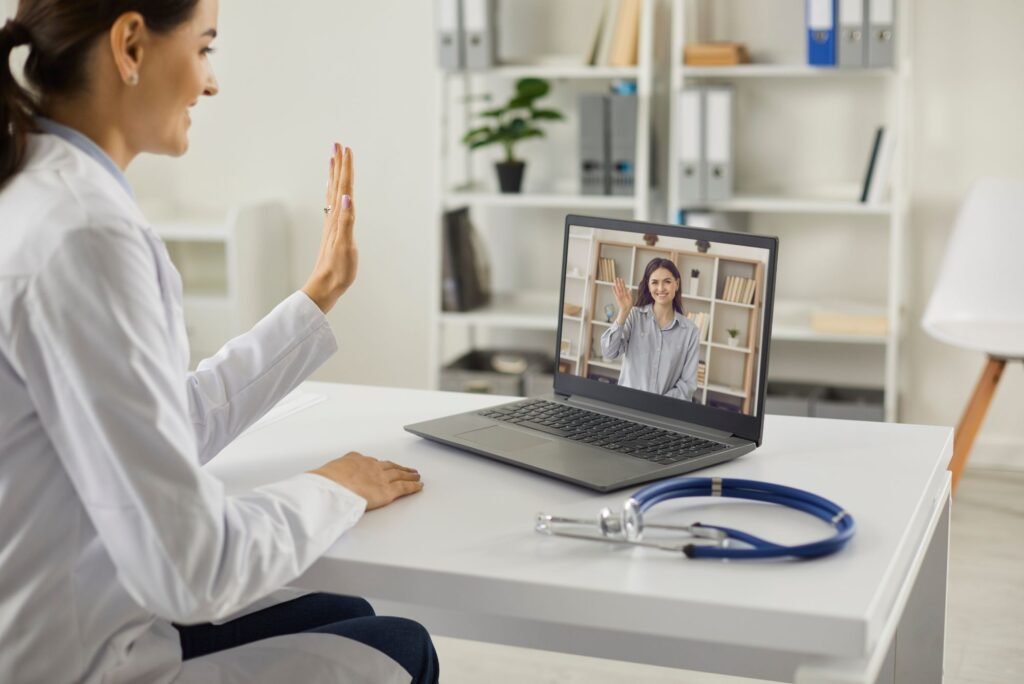Video consultation
Video consultation
Video Consultation for Physiotherapy and Occupational Therapy
In the rapidly evolving landscape of healthcare, technology is playing a pivotal role in bridging gaps and enhancing accessibility to essential services. Video consultation has emerged as a transformative tool, particularly in the fields of Physiotherapy and Occupational Therapy. This innovative approach allows individuals to receive professional guidance and support from the comfort of their homes, eliminating geographical barriers and providing convenience without compromising on the quality of care.
What is Video Consultation?
Video consultation, also known as telehealth or telemedicine, refers to the delivery of healthcare services remotely through video conferencing technology. In the context of Physiotherapy and Occupational Therapy, this means that individuals can connect with their therapists virtually, allowing for a personalized and interactive session without the need for an in-person visit.
Benefits of Video Consultation for Physiotherapy and Occupational Therapy:
Convenience:
– Location Independence: Patients can attend therapy sessions from the comfort of their homes, saving time and reducing the need for travel.
– Flexible Scheduling: Video consultations offer greater flexibility in scheduling, accommodating busy lifestyles and work commitments.
Access to Specialists:
– Overcoming Geographic Barriers: Individuals living in remote areas or lacking access to specialized therapists can benefit from the expertise of professionals located elsewhere.
– Diverse Expertise: Video consultations enable access to a broader range of specialists, ensuring individuals receive the best possible care for their specific needs.
Continuity of Care:
– Consistent Monitoring: Patients can maintain a consistent connection with their therapists, allowing for regular monitoring of progress and adjustments to treatment plans.
– Preventing Interruptions: Even in situations where in-person sessions may be interrupted (e.g., travel restrictions, weather conditions), video consultations provide a seamless continuation of care.
Cost-Effectiveness:
– Reduced Travel Costs: Patients can save on transportation expenses associated with commuting to a physical therapy clinic.
– Time Efficiency: Video consultations often require less time compared to traditional in-person visits, making it a cost-effective option for both therapists and patients.
Patient Empowerment:
– Self-management: Video consultations empower patients to take an active role in their rehabilitation, as therapists can guide them through exercises and techniques that can be performed independently.
– Education and Awareness: Therapists can use the virtual platform to educate patients about their conditions, preventive measures, and lifestyle modifications.
How It Works:
Appointment Scheduling:
– Patients can schedule video consultation appointments through the clinic’s online platform or by contacting the administrative staff.
– Appointment confirmations and reminders are sent via email or text.
Virtual Session Setup:
– Patients receive a secure link to access the video consultation platform.
– No specialized software is usually required; a stable internet connection and a device with a camera are sufficient.
Interactive Sessions:
– Therapists conduct sessions in real-time, discussing symptoms, demonstrating exercises, and providing guidance just as they would during an in-person session.
– Therapists may use visual aids, digital exercise programs, and real-time feedback.
Documentation and Follow-up:
– Therapists document the session notes electronically, ensuring a comprehensive record of the patient’s progress.
– Follow-up appointments are scheduled as needed, and therapists may provide additional resources or recommendations.
Security and Privacy:
Ensuring the security and privacy of patient information is a top priority in video consultations. Health platforms compliant with healthcare privacy regulations, such as HIPAA, are utilized to protect sensitive data.
Getting Started:
Equipment and Setup:
– Patients need a device with a camera and microphone, along with a reliable internet connection.
– Therapists ensure a secure and private environment for the session.
Technical Support:
– Clinics provide technical support to assist patients in setting up and troubleshooting any issues with the video consultation platform.
Initial Assessment:
– Therapists conduct an initial assessment, gathering information about the patient’s medical history, current symptoms, and goals for therapy.
Tailored Treatment Plans:
– Based on the assessment, therapists develop personalized treatment plans that may include a combination of exercises, education, and therapeutic interventions.
Conclusion:
Video consultation for Physiotherapy and Occupational Therapy is revolutionizing the way healthcare services are delivered. By harnessing the power of technology, individuals can access expert care conveniently, promoting continuity, and achieving positive health outcomes. Whether overcoming geographical barriers, enhancing patient empowerment, or ensuring cost-effective care, the integration of video consultations marks a significant step towards a more accessible and patient-centric healthcare system.

Book an Appointment
Physiotherapy: Your Path to Pain Relief
Physiotherapists are movement experts who can help manage and reduce pain. Through manual therapy, exercise programs, and education, they can improve your mobility and function, empowering you to live an active, pain-free life.
